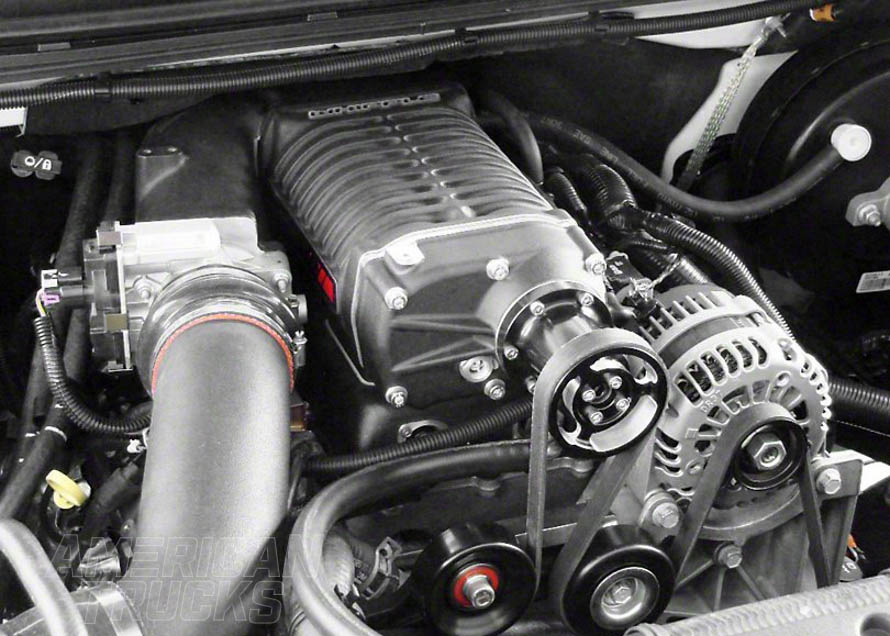GM has now been equipping the Silverado pickup truck with LS based motors for nearly two decades. Starting with the Vortec series in 1999, Chevrolet has evolved their pushrod engine line-up to feature the generation V EcoTec3 small block series of today, which provide ever better horsepower, torque and fuel economy with each subsequent model. If 300-400 horsepower is not enough for your Silverado, you’ll be happy to know that the aftermarket has kept up to speed with these powertrain advancements and the supercharger kits presently available offer outrageous power and torque improvements all combined into a sleek package for a relatively streamlined installation.
Contents
Shop Silverado Superchargers
Superchargers are well known as the "ultimate bolt-on". This is because of their more straightforward installation in comparison to other forced induction choices and the amount of horsepower they add to your build. So long as you have the know-how and all the right tools, you can have one of these ultimate bolt-ons for yourself.

